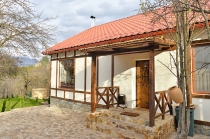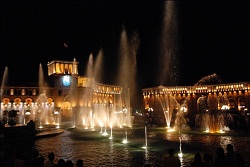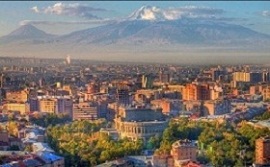
Marriott Tsaghkadzor
The hotel complex "Marriott Tsaghkadzor" offers a comfortable stay in the fresh air of Tsaghkadzor,...
Golden Palace Resort
"Golden Palace Resort-Spa" is the only officially recognized 5-star hotel in Tsakhkadzor, in...
Elegant
Elegant" hotel has stylish rooms where the guests can enjoy picturesque view of mountains and...
Villa Jrhogher
"Villa Jrhogher" is situated in the heart of Dilijan’s forests and is a perfect choice for a small group of friends, colleagues or family members to host up to 10 guests. Free private parking...A R M E N I A


Armeniais one of the most ancient countries in the world. Human beings have inhabited the Armenian Plateau and Caucasus Region since over 100,000 years ago. It is not surprising that artifacts found during archaeological excavations were appraised by experts to date back more than 2 million years, attesting to the fact that the Armenian highlands could be looked upon as one of the origins of human creation. Remnants of the Neolithic, Bronze and Iron Ages, megalithic buildings cut in stone, rock paintings and carvings, tomb fields, and fortified settlements stand as witnesses to the 10,000 years of Armenia’s history. Additionally, the Bible records that Noah's Ark came to rest on Historic Armenia's Mt. Ararat, and there are many references of his descent from the mountain after the Great Flood. In the Ararat valley one comes across the remnants of the Medzamor Bronze and Iron Age settlements- symbols of early urban civilization in Armenia. All of these stand as the cradle of Armenian Civilization country situated between some of the Old World's major water ways, and validate that the inhabitants of this land were one of the first known to forge bronze and the first to smelt iron; they also were the first recorded astronomers to create a solar calendar; the first to devise the compass and to picture the world as round.
Unique discoveries revealed as a result of excavations at Shengavit (4000-3000 B.C.) confirm that Armenia is the motherland of metallurgy, jeweler’s art, wine-making and horse breeding.
A group of archaeologists studying the ancient city concluded that 4000-3000 B.C. Armenia was a highly developed state with exclusive culture. The excavations are carried out by an Armenian-American archaeological expedition.
The Armenians, an ancient people living on an ancient land, call Armenia "Hayastan," and themselves "Hai". Oral history explains the lineage of the Armenian people as being the direct descendants of Noah's son Japheth. The indigenous people of the land of Ararat, Armenians forged their national identity with the rise of powerful Armenian kingdoms, the adoption of Christianity as Armenia's state religion, and the creation of the Armenian alphabet, which spurred the development of literature, philosophy, and science. Tourists find over 4,000 historical monuments throughout Armenia, covering various periods of the country's history from prehistoric to Hellenistic times, and from the early to medieval Christian era. There is no better place to view literary and artistic history than Yerevan's unique Matenadaran (Institute of Ancient Manuscripts), which houses an extraordinary collection of 14,000 complete manuscripts, fragments and miniatures. Armenian manuscripts, beautifully illuminated with miniatures, combine Armenia's literary and illustrative traditions.
The Christian faith has shaped Armenian culture so intimately that it permeates the very landscape at virtually every corner of the country. The Armenians created their masterpieces during rare periods of peace and relative prosperity over the centuries. From ancient times, Armenians have cherished their artistic traditions, which reflect a unique culture and landscape. Aspects of everyday life are expressed in the most artistic fashion, in needlework,embellishments, carvings and design.
Wood carvings replicate the ancient stone crosses (khachkars) found throughout the country, and no two are exactly alike. Armenian crafts couple elegant utility and delightful whimsy in textiles, ceramics, metal and woodworking.


